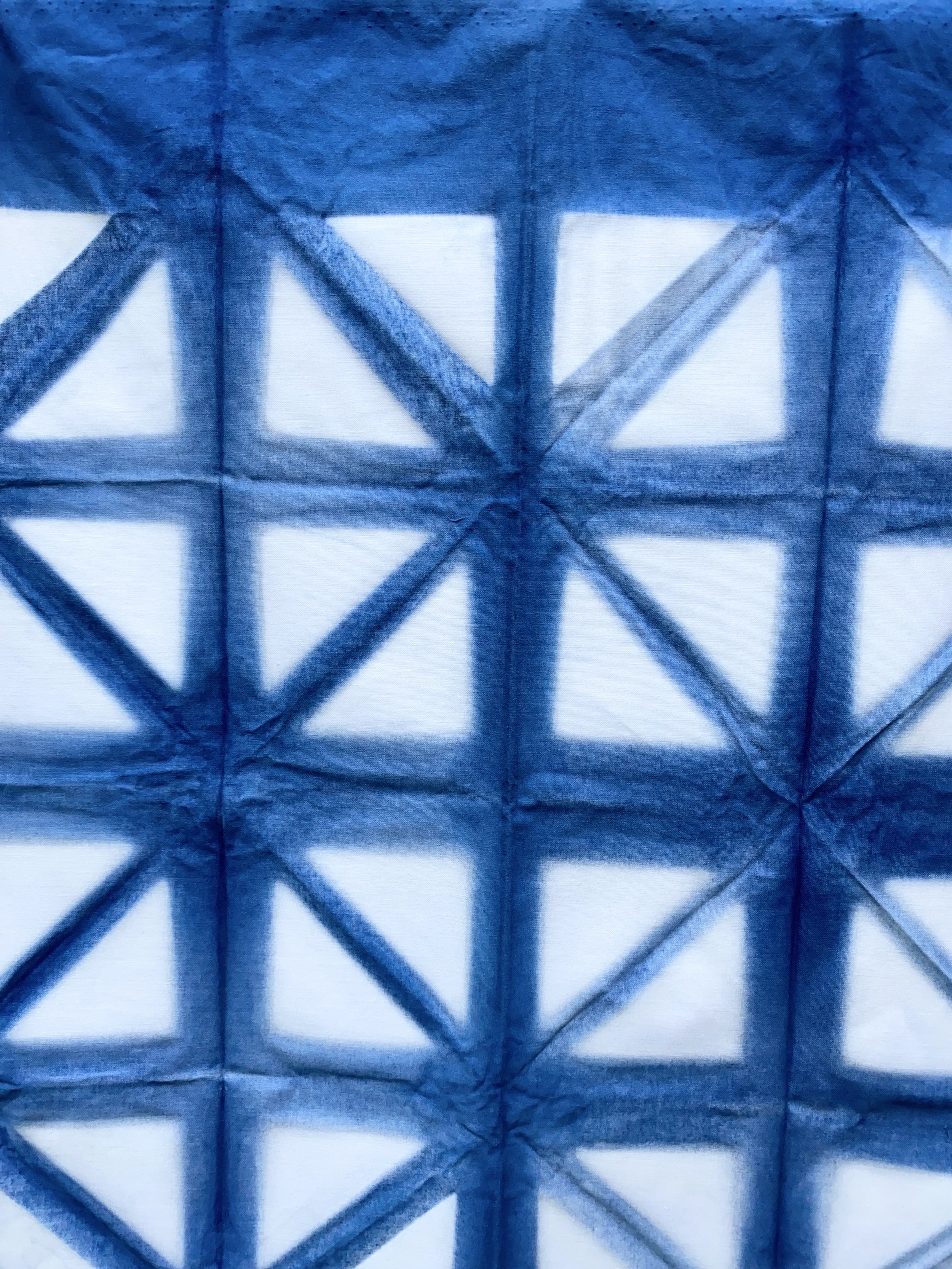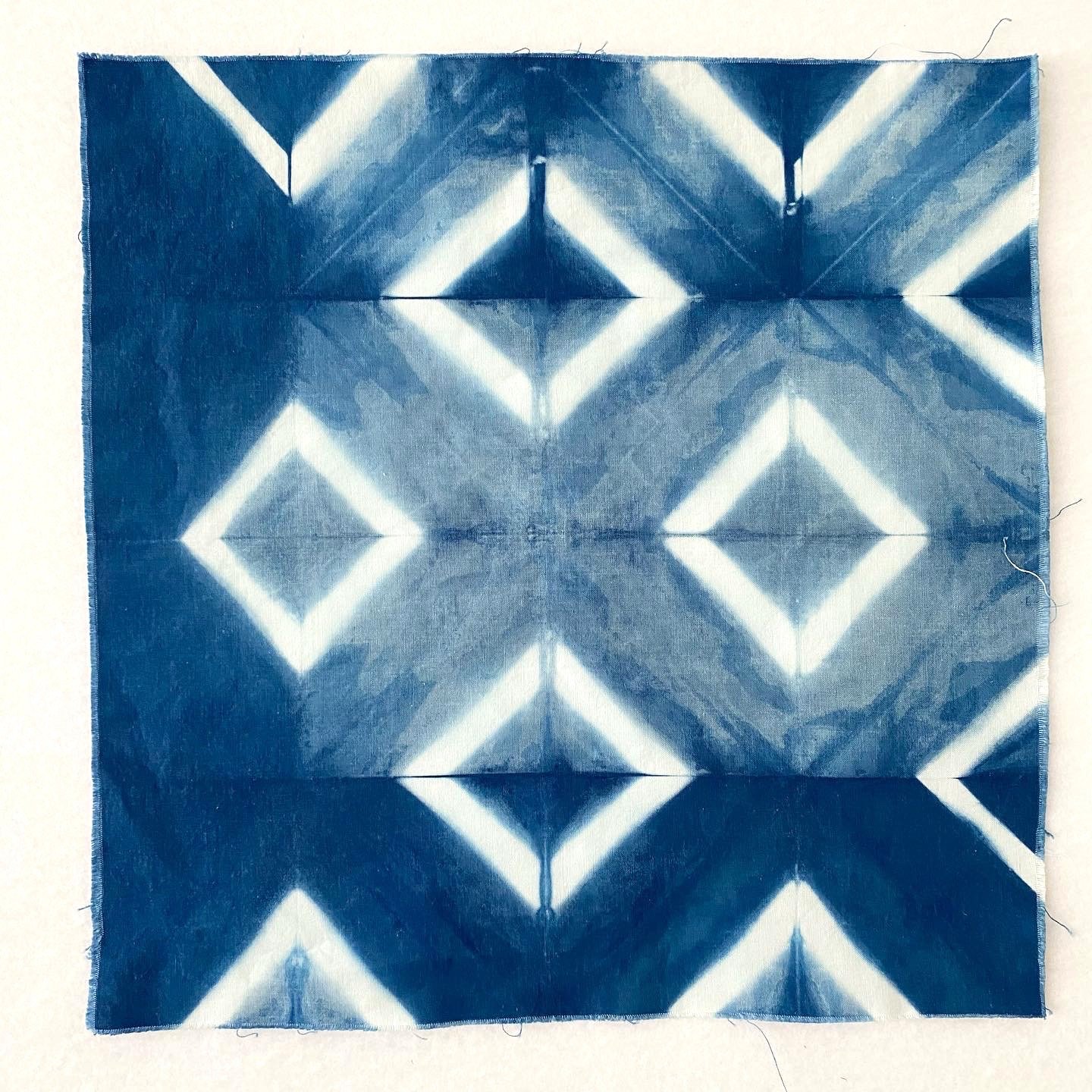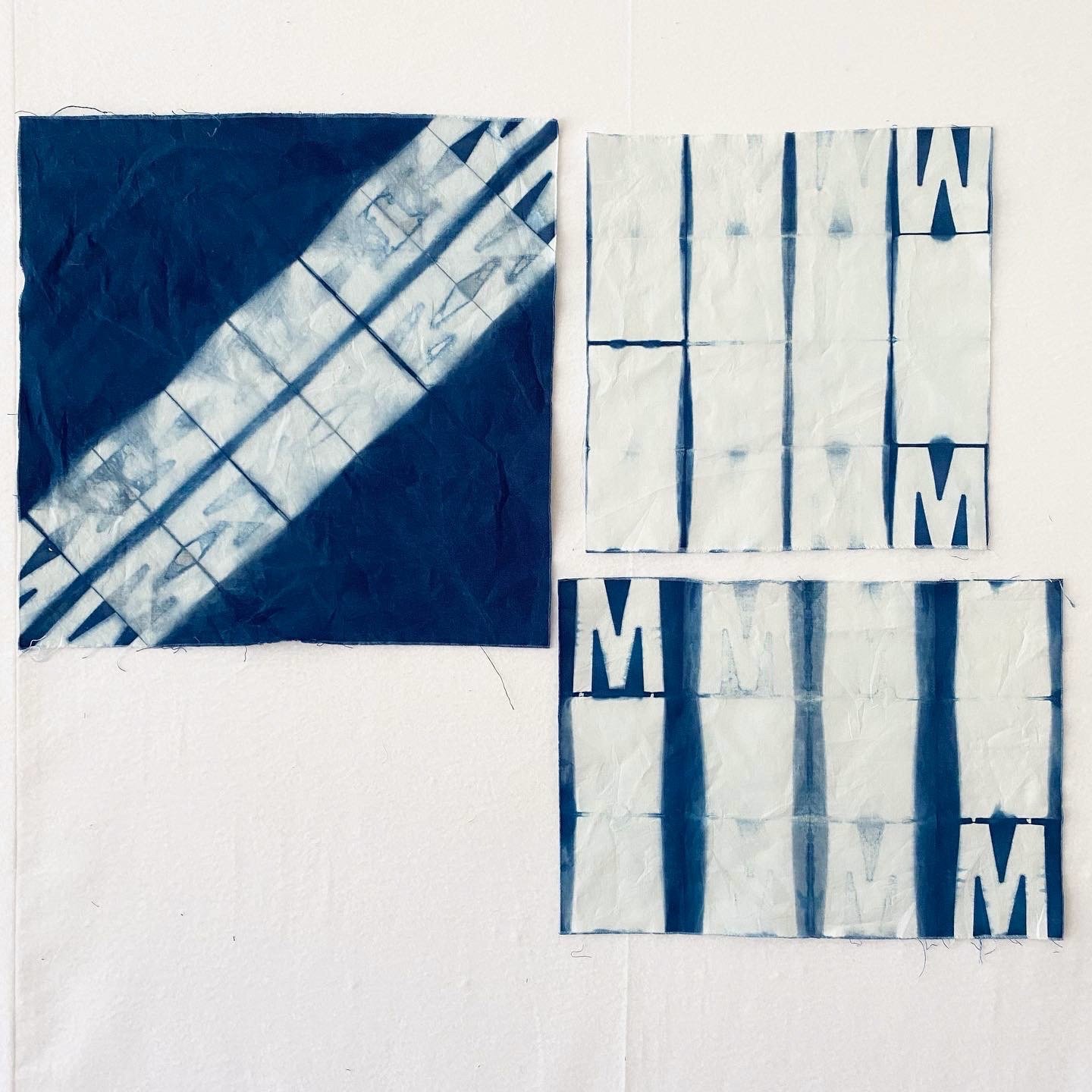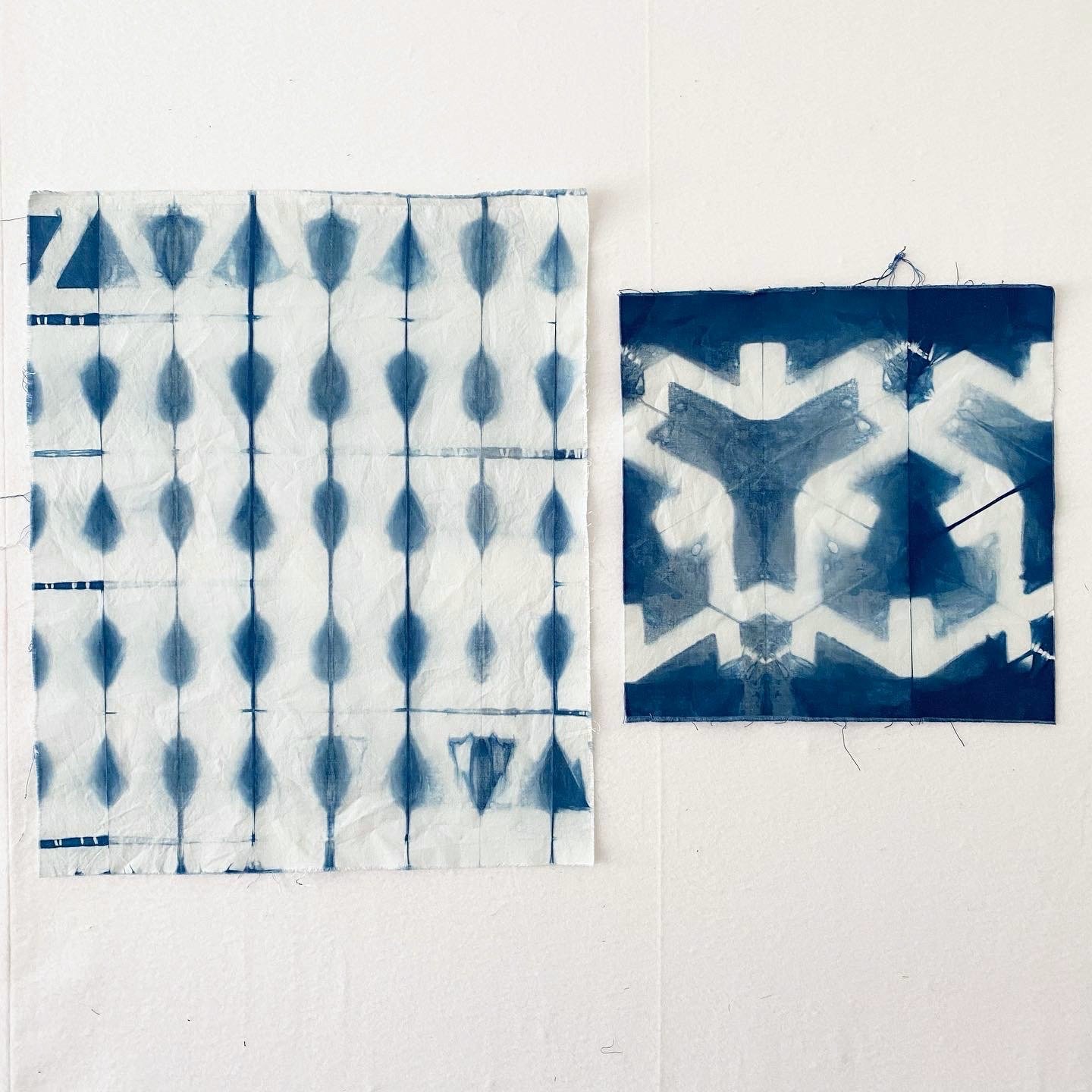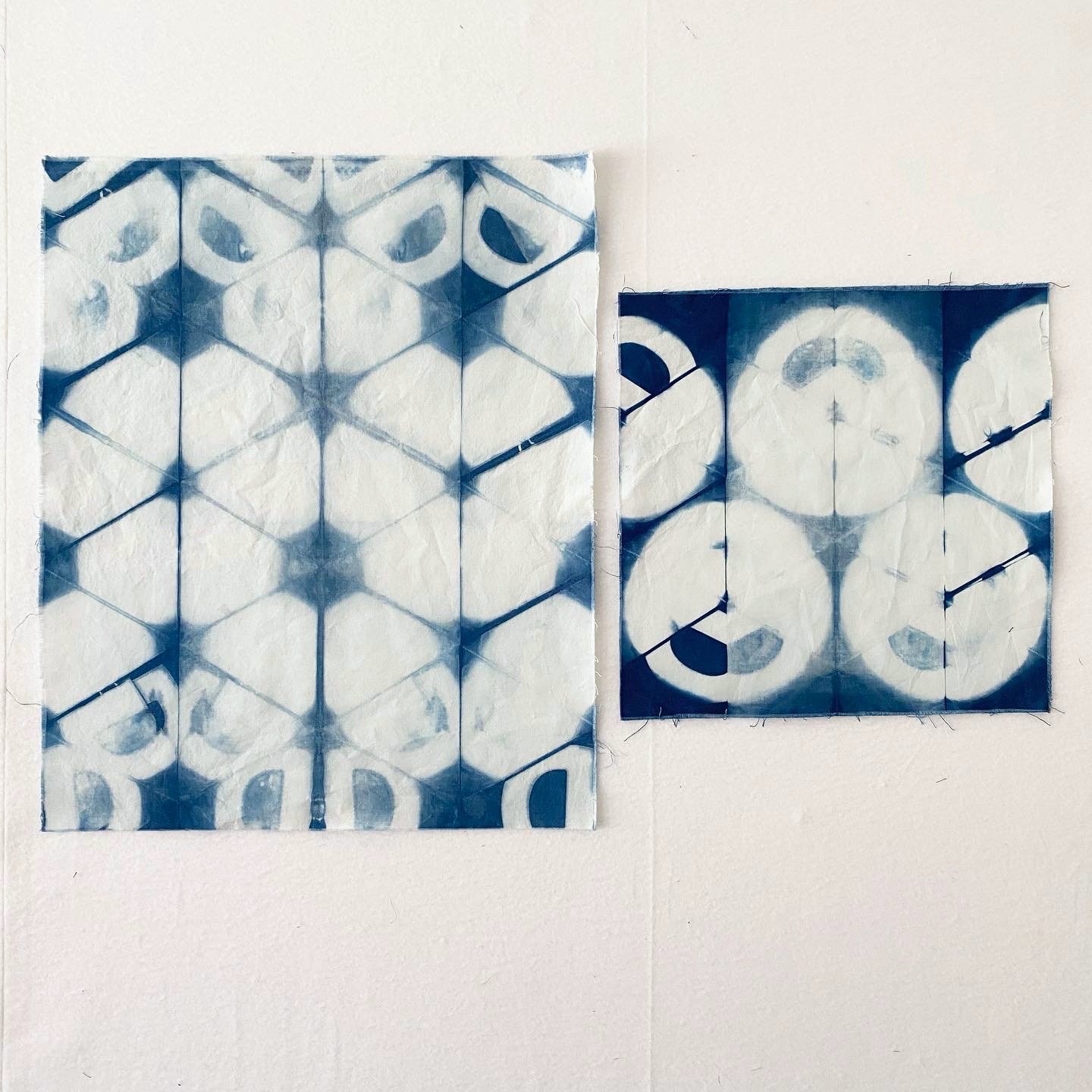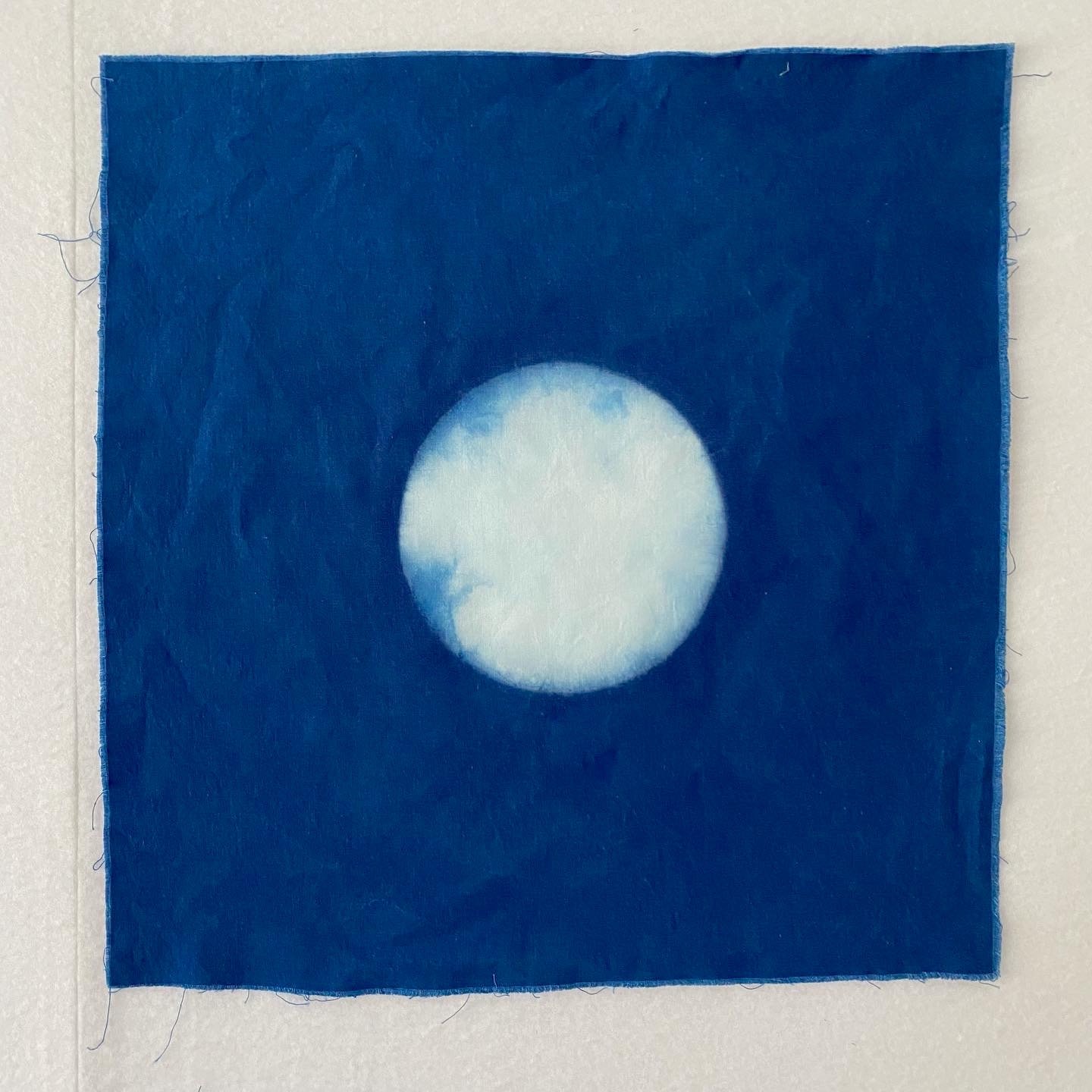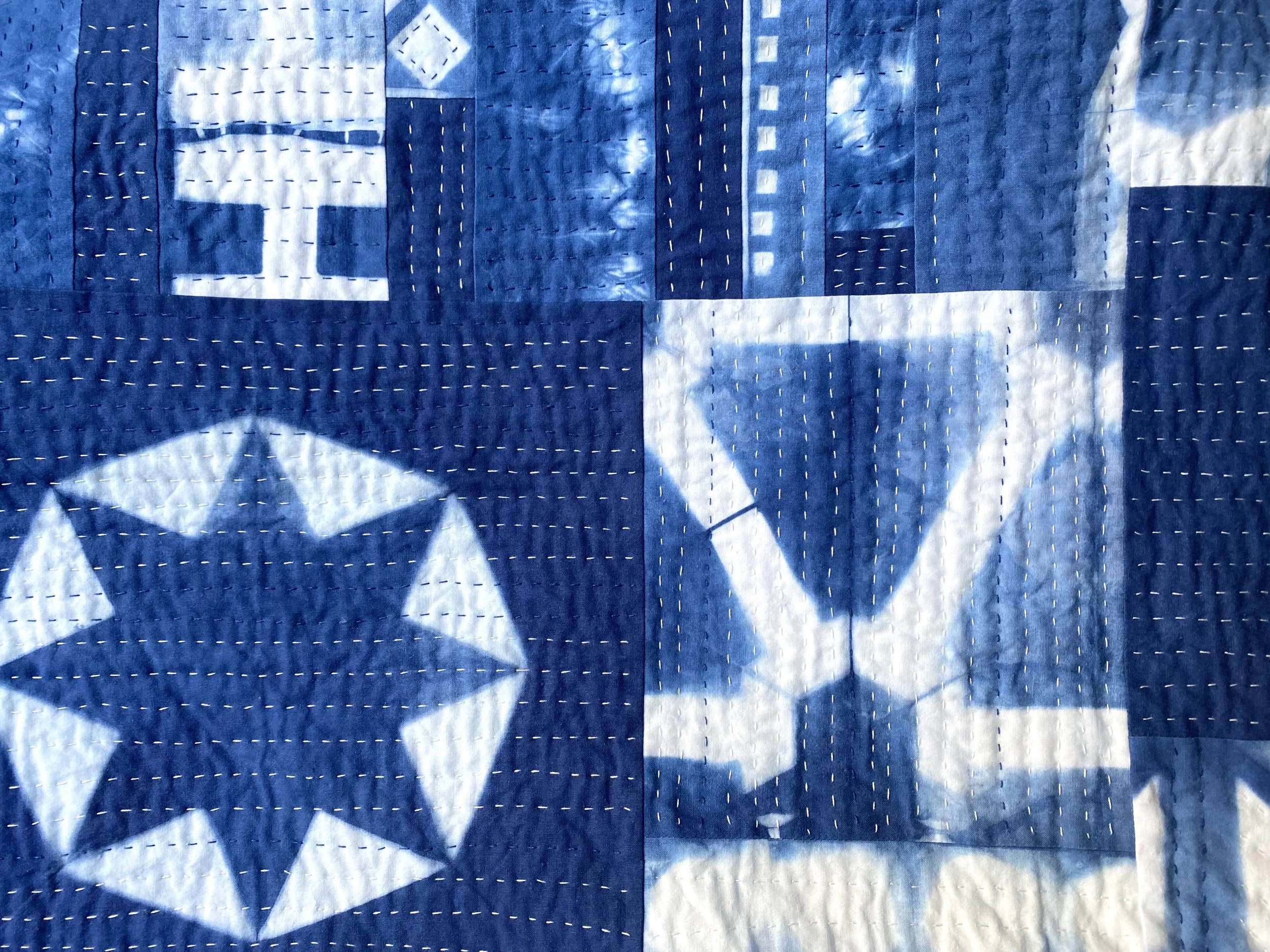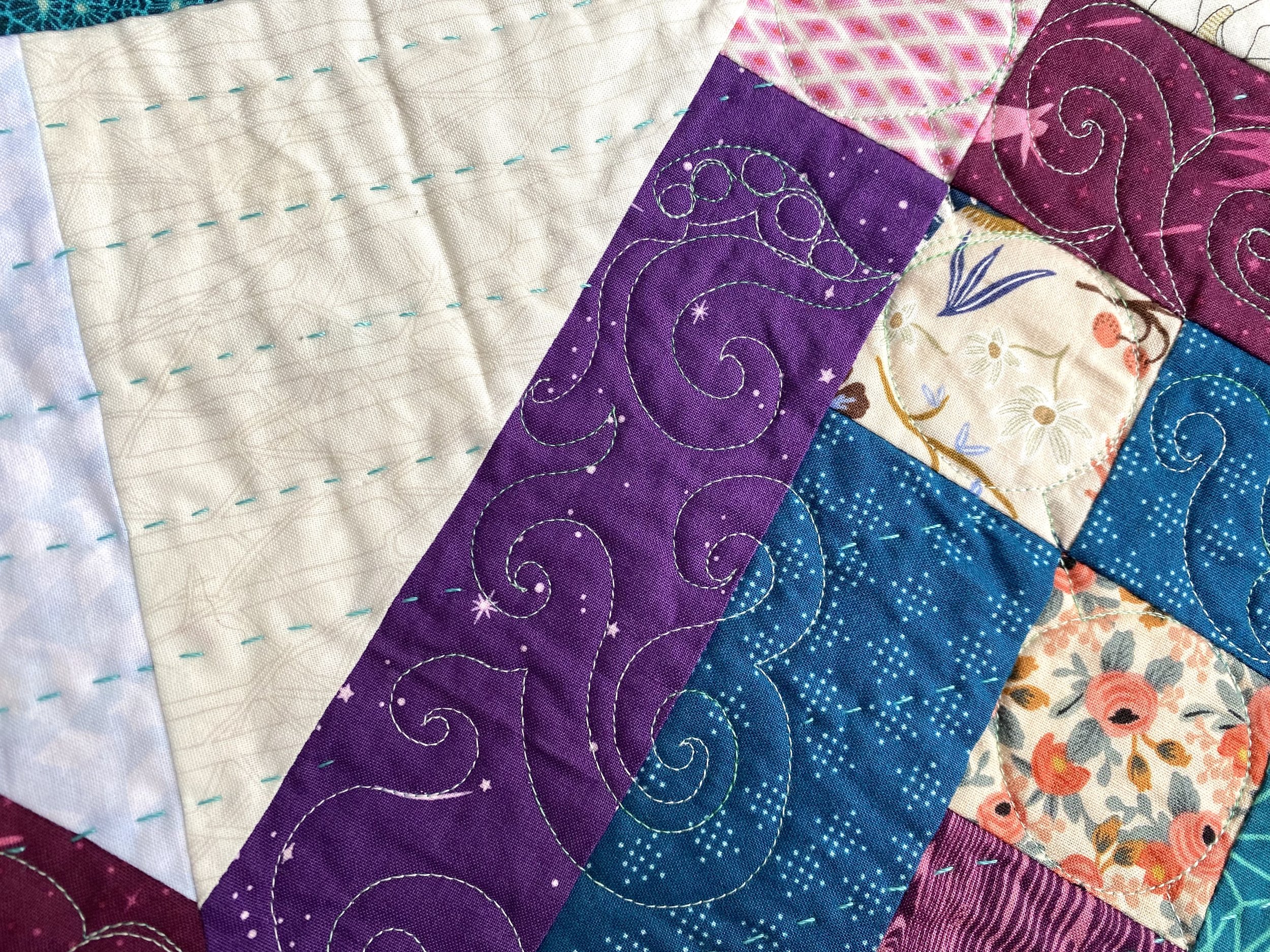Lessons from a Shibori Quilt
I dyed my own fabric for the first time this past summer, on a sewing retreat in rural Maine. I took a workshop from Kristin Arzt and I was hooked. Dyeing fabric was always one of those “I’ll never”s for me, and as I’ve learned since, every time I say “I’ll never”, I always end up doing the thing.
So now I dye my own fabric. Sometimes.
I’m a fairly low key person, but when I’m into a project or stressed or in the middle of a global pandemic, I can get quite high strung. Lots of fear, lots of talking, lots of energy. I’m not a huge fan of it; I don’t see how others can be. I’m working on it.
Much of 2021 for me was throwing myself into creative projects to distract myself from anxiety and depression. It sort of worked, but it wasn’t ultimately healthy. Turns out trying to outrun your problems only delays them until you wear yourself out. Then you’re even less equipped to handle them when they come crashing in.
I jumped from project to project, starting a new one literally within minutes of finishing the last. It meant that finishes were unsatisfying. I was chasing that moment in between, when I lost myself in the design, the texture, the process. But still, moving at a breakneck pace, there wasn’t much time to enjoy even that.
Hand dyeing fabric forced me to slow down.
It’s something not dictated by my own abilities, but by physics. You can’t rush an indigo vat. It simply won’t work. You don’t get to decide when it’s ready - it will tell you.
The indigo vat is a living thing. It breathes, it imbues, it settles, it sleeps. You have to wake it up before you use it. But it won’t work unless it’s ready. You do what you can to make it happy, and if all goes well, it will be. Or it will tell you to come back tomorrow. Because that’s the other thing - it’s never finished with you. When it’s not ready to work, it tells you so in a sleepy way, a hopeful way. Try again tomorrow.
It’s simple in a complex way.
This can be frustrating, especially when you’re aligning the rest of your schedule to factor in several hours of dyeing. Which isn’t easy with three young kids and a husband who works from home.
But when everything aligns, it’s magic.
When my indigo vat is ready, the surface reminds me of Jupiter. The top of the vat is a bright clear amber, iridescent swirls of pigment just below the surface. Within moments of submerging anything it will start to work its magic.
When you use a fructose indigo vat like this one, you’re putting the fabric through a chemical process. In the vat, it goes through reduction. The indigo pigment in the water attaches to the submerged fibers. It will turn yellow. And this is the part where you wait. For five full minutes, you stand and hold the fabric, gently working the fibers to make sure the indigo is able to reach all of the edges, all of the folds, before lifting it from the vat.
The moment oxygen touches the fabric, it begins to change to blue.
Yellow slowly changing to blue means it will look green, at first. As the piece oxidizes, it will become more and more blue. You watch it happen before you.
Then you repeat. Back in the vat, back out. Five minutes in, twenty out. The saturation gets darker each time. Once it’s washed and dried it will become much lighter - so you need to dip it until it looks darker than you want it to be.
This process can’t be rushed, and it requires care. Introducing oxygen into the vat with drips or tiny splashes will reduce its effectiveness. And even if you’re extremely careful, the vat may eventually get tired anyway.
I spent the entire day and well into the night standing still in my backyard, listening to an audiobook with my hands submerged in indigo. I was so motionless that at one point, a squirrel came right up and sat next to me. So add “feeling like a Disney princess” to the list of potential outcomes of this activity.
I knew I wanted to make a quilt from all of my dyed fabrics. I didn’t know exactly what it would look like, but I wanted to showcase all of the patterns made by Shibori.
Because that’s what I was doing: Shibori dyeing. Shibori is a Japanese technique of resisting dye using folds and objects - typically wood blocks and string. I’m new to this, and I implore you to look into Shibori artists who actually know what they’re doing. This technique is rich and beautiful, and is so much bigger than me in my backyard with my little bucket.
Even so, I learned a lot from the process, and I’m grateful for the experience.
I started by folding my fabric and pressing shapes around it. At first I had an idea of what I wanted the finished piece to look like, and was shaping the fabric to get that effect.
You don’t know what it’s going to look like until you open it up. And once you open it up, you can’t put it back in the vat to make it darker.
And because I wanted them to be very dark, that meant I had to wait. Me. Impatient, rushing, anxious me. I was forced to slow down and go through the process. And it was the best thing for me.
So for hours, I moved each piece through cycle after cycle of dipping and resting, dipping, and resting. After each dip, I was tempted to open it and see what I had. But I knew I would regret not making it just a little darker. So I waited. And dipped them again the next morning. Again and again. Most got 7 dips. Some got 8.
My patience was rewarded.
Another lesson came with the unfolding: you can try to impose your plan on something, and you may even get the result you planned for - but there will still be unexpected imperfections. And it’s these imperfections that make each piece uniquely beautiful. This fabric is so very special because it can’t be recreated. Every single one is the only one just like it.
So when it came time to put them together, I didn’t want to leave any of them out. There were different sizes, different styles, different levels of saturation - but they all belonged together.
Cutting into them was difficult. I had to remind myself that I can always make more. And even though no two pieces are exactly the same, that’s the joy of them. If I store them away, I’ll never get to enjoy them again. If they’re in a quilt I use, I’ll enjoy them every day.
I improv-pieced it, laying out the pieces where I thought they’d be happy. Then I puzzled them together, figuring out as I went how they would fit.
As for quilting. I love machine quilting, and I love doing it on my longarm. But hand dyed fabric from a vat that I coaxed into working, carefully moving through each step of the process… it only felt right to hand quilt it, too.
Hand quilting for me is another way of reminding myself to slow down. Each stitch is deliberate. The resulting texture is different. Where machine quilting puffs, hand quilting is a rippling cloud. The needle moving through the quilt is a small dance, sometimes with many steps out of place. But it doesn’t matter.
I hand quilt with 12wt Aurifil thread. For this quilt, I chose the colors 2021 and 2783. The 2783 perfectly matches the deepest blue in my quilt, and the 2021 is a bright white.
Once again, it’s not about perfection or a pre-planned result. It’s about the process, and seeing where it takes you. There’s a reason why you’re taking the time to sit with the piece. It’s getting to know each fiber.
I had put so much into dyeing the fabric that I hesitated to quilt it. I didn’t want the quilting to take away from the designs. I didn’t want it to be distracting or to make my earlier work disappear.
Again, another lesson.
The quilting enhanced what was there. Contrasting thread adds some of my favorite elements to the whole piece.
This project kept teaching me the same lesson again and again. Slow down, trust the process, expect nothing but to learn. Let the moment happen.
This is a lesson I want to take with me into the year. This quilt means a lot to me. Not only because of the time I put into it, but because of where I was when I made it. 2021 was one of the most stress-filled years of my life. It was also when I learned how to make and use an indigo vat. I remember who I was when I dyed the fabric, and who I was when I quilted it. And they were two slightly different people.
This quilt is a reminder of that time and of the growth that’s possible. And of those times when the most important thing is to let go, trust the process, and see where it takes you.











